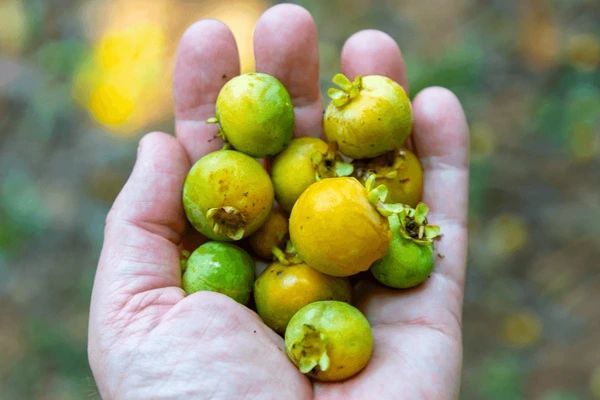Campomanesia species add an exotic flair to your tropical garden with their unique and aromatic fruits. Although most Campomanesia seeds are recalcitrant and must be kept moist for storage, note that the “sete capotes” variety is an exception and can tolerate a bit of drying.

Remember: You can purchase high-quality Campomanesia seeds directly from our website to start your tropical garden.
Introduction
Campomanesia seeds require careful moisture management and a well-draining substrate to thrive. To preserve viability, store recalcitrant Campomanesia seeds (except for the “sete capotes” type) in a moist medium if not sown immediately.
Step-by-Step Process
- Seed Extraction and Preparation
– Extract the seeds from fully ripe Campomanesia fruits by thoroughly removing the pulp.
– Rinse the seeds well and let them air-dry for several hours. - Choosing the Right Sowing Medium
– Use a well-draining, slightly acidic substrate. A mix such as coconut fiber with vermiculite (in a 2:1 ratio) or a commercial pine bark substrate is ideal.
– Sow the seeds shallowly (about ¼ inch deep) in small containers. - Germination Environment
– Maintain a warm temperature of around 75°F (24°C) and high humidity by covering the pots with clear plastic.
– Expect germination within 40 to 60 days, though some varieties may take longer. - Post-Germination and Transplanting
– Once seedlings have established and reached a suitable size, transplant them into larger pots or outdoors.
– Start with partial shade and gradually introduce full sun as they mature.
Conclusion
With careful moisture control and a warm, well-draining environment, your Campomanesia seeds will germinate successfully. Order your Campomanesia seeds from our website today and start growing your own tropical delights!
